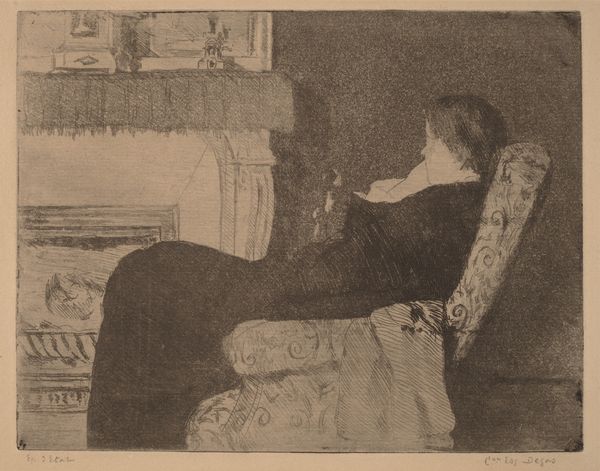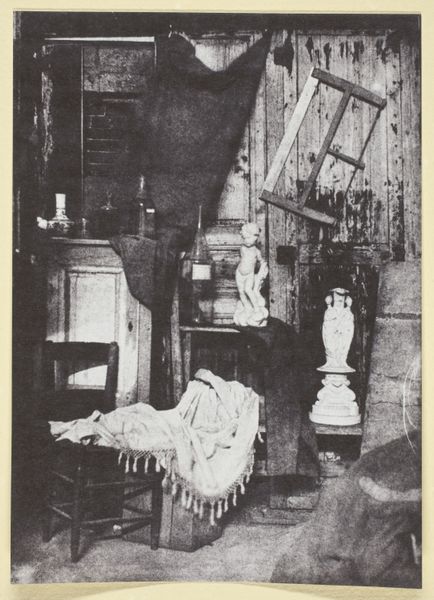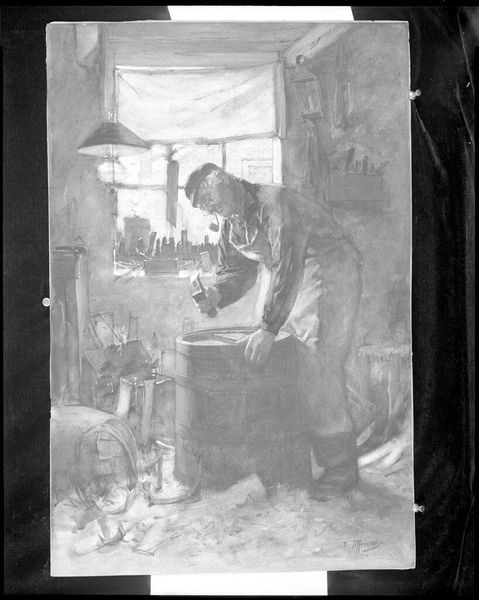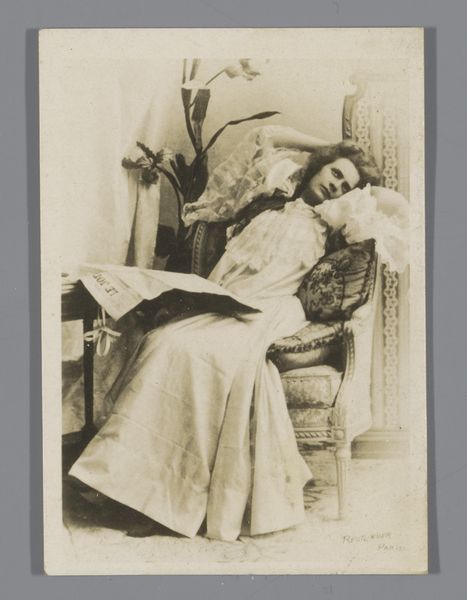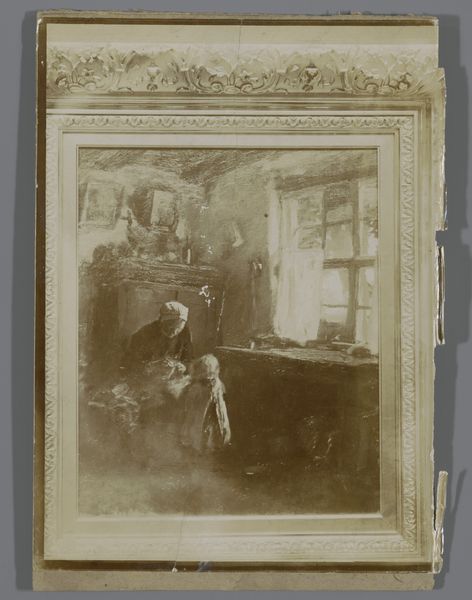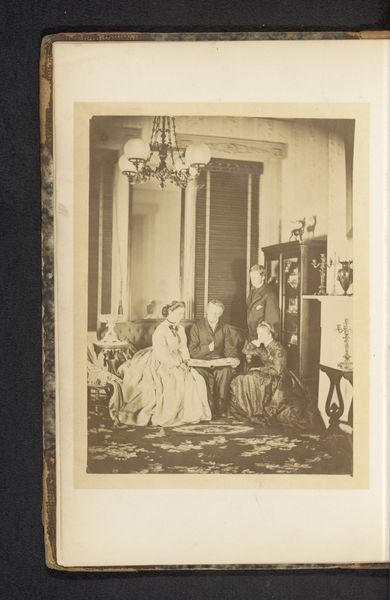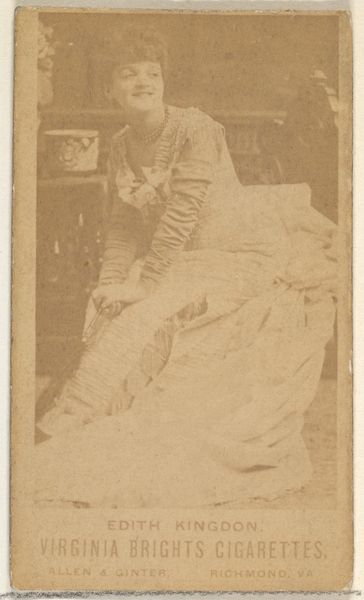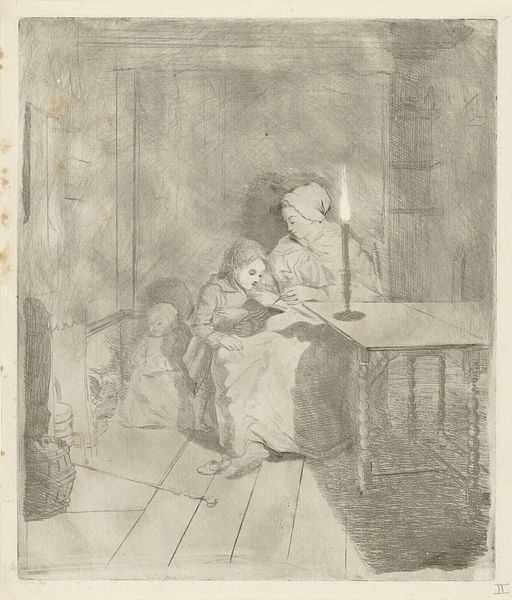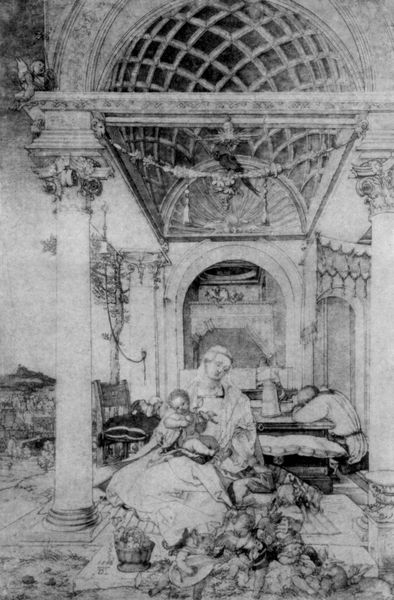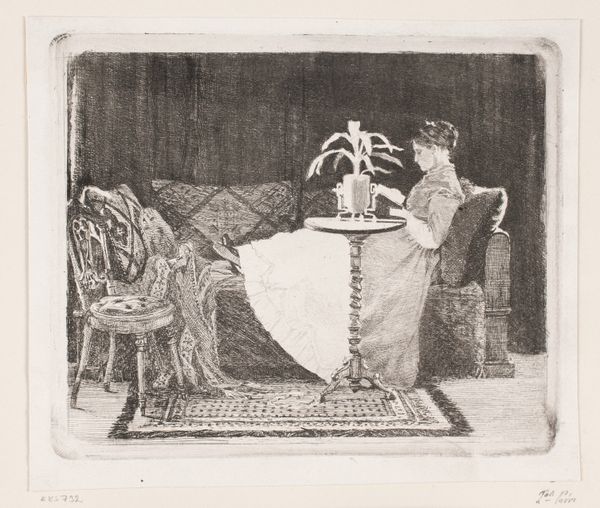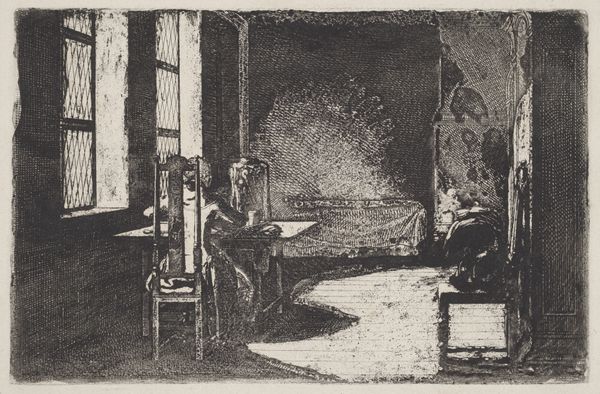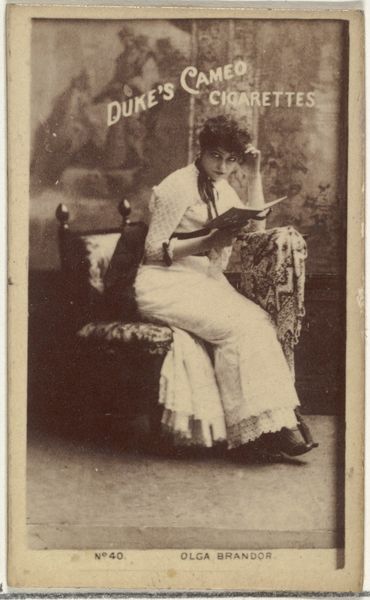
drawing, print, etching
#
portrait
#
drawing
# print
#
impressionism
#
etching
#
figuration
#
intimism
#
genre-painting
Dimensions: plate: 6 1/4 x 4 5/8 in. (15.8 x 11.7 cm) sheet: 7 1/4 x 5 1/2 in. (18.3 x 14 cm)
Copyright: Public Domain
Editor: This is Julian Alden Weir's "The Evening Lamp," an etching made sometime between 1885 and 1895. The figure reading is shrouded in shadow, and the lamp offers a sharp contrast. I am interested in your take, what do you see? Curator: Focusing purely on the internal structure, consider the stark interplay of light and shadow. Notice how Weir employs dense, intricate line work to create form, while leaving areas sparsely rendered, fostering a sense of depth. What strikes you about the composition? Editor: I see how the sharp contrast isolates the figure, and the way the dark lines become more pronounced as they approach the lamp really make that light seem brighter. It almost creates a sort of cone. Is there anything about his process that helps emphasize that contrast? Curator: Note how the density of lines diminishes dramatically beyond the pool of light cast by the lamp. It plunges the surrounding space into obscurity, concentrating our visual attention on the subject. This manipulation of light and dark is crucial, reducing extraneous detail, so that we concentrate on the central narrative elements. Are you seeing how light directs the eye? Editor: Yes, the composition seems simple, yet complex in its manipulation of line. The figure becomes just another object defined by shadow and the presence of the lamp, which highlights how well he controlled the contrast through line work. Curator: Precisely! By restricting ourselves to the formal qualities—the lines, values, and composition—we uncover the strategies Weir employed to express form through purely pictorial means, which adds another layer of appreciation.
Comments
No comments
Be the first to comment and join the conversation on the ultimate creative platform.
